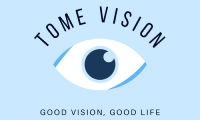Retinal Diseases and Their Impact on Vision
The retina is a crucial part of the eye that plays a vital role in vision. It is a thin layer of tissue located at the back of the eye that contains millions of light-sensitive cells called photoreceptors. These photoreceptors convert light into electrical signals, which are then sent to the brain, enabling us to see and interpret the world around us. However, various retinal diseases can affect the functioning of the retina, leading to impaired vision or even blindness. This article explores some common retinal diseases and their impact on vision.
1. Age-related Macular Degeneration (AMD):
– AMD is the leading cause of vision loss among older adults.
– It primarily affects the macula, which is responsible for central vision, fine detail, and color perception.
– Symptoms include blurred vision, difficulty reading or recognizing faces, and seeing distorted or wavy lines.
– In advanced stages, AMD can significantly impact a person’s ability to perform daily activities.
– Treatments such as medication, laser therapy, or photodynamic therapy can slow down the progression of AMD but cannot restore lost vision.
– Early detection through regular eye exams is crucial for managing AMD effectively.
2. Diabetic Retinopathy:
– Diabetic retinopathy is a complication of diabetes and is caused by damage to the blood vessels in the retina.
– In the early stages, it may not cause noticeable symptoms; however, as it progresses, it can lead to severe vision loss or even blindness.
– Symptoms include floaters, blurred or fluctuating vision, dark or empty areas in vision, and difficulty perceiving colors.
– Maintaining good control over blood sugar, blood pressure, and cholesterol levels can help prevent or slow down the progression of diabetic retinopathy.
– Treatments include laser treatment, medication injections, or vitrectomy (a surgical procedure).
The impact of retinal diseases on vision can be profound, affecting a person’s quality of life, independence, and mental well-being. Here are some general effects these diseases can have:
– Visual acuity loss: Most retinal diseases cause a gradual or sudden decline in visual acuity, making it harder to read, recognize faces, or perform tasks requiring precise vision.
– Central vision loss: Diseases like AMD primarily affect the macula, resulting in the loss of central vision. This can make it difficult to see fine details, read, or drive.
– Peripheral vision loss: Conditions like retinitis pigmentosa can cause peripheral vision loss, leading to a condition known as “tunnel vision.” This restricts the individual’s field of view, making navigation and mobility challenging.
– Color vision deficits: Certain retinal diseases can impair color perception, making it hard to differentiate between colors or perceive them accurately.
– Contrast sensitivity reduction: Many retinal diseases affect the ability to perceive differences in contrast, making it challenging to distinguish objects from their background.
– Night vision difficulties: Conditions such as retinitis pigmentosa often result in poor vision in low-light conditions, causing night blindness and making it harder to navigate in dimly lit environments.
It is important to emphasize the significance of regular eye exams to detect retinal diseases in their early stages. Timely intervention and appropriate treatment can help prevent further vision loss and ensure maximum visual function. If you experience any concerning changes in your vision, consult an eye care professional promptly. Together, we can raise awareness about retinal diseases and work towards better prevention and treatment strategies to mitigate their impact on vision.
